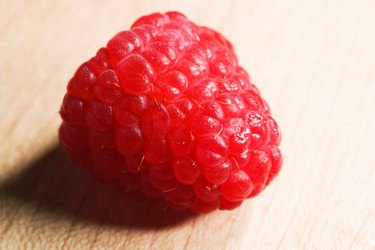Things You'll Need
Pruning clipper
Isopropyl alcohol
Bleach

A Heritage raspberry is a type of everbearing cane that produces one or two berry harvests, depending on the pruning maintenance chosen. The firm, medium-size Heritage berries are good for eating fresh, desserts or freezing. Pruning maintenance occurs after planting, after berry harvest and in early spring before the canes start growing. Following a pruning schedule stimulates growth to keep the canes producing berries for many years.
Step 1
Prune Heritage canes to a height of 6 inches after planting. Cut the canes the same day of planting to push energy toward creating new growth for berry production.
Video of the Day
Step 2
Prune off 2-year-old fruit-producing canes once the harvest is complete in the fall. Remove the canes by clipping them off at ground level to stimulate new growth for berry production in two years.
Step 3
Cut back to the ground any winter damaged or dead canes in the spring. Remove diseased canes at ground level to prevent spread to other plants. Spring prune the canes before they being to sprout.
Step 4
Prune tall canes in the spring by clipping the ends so the canes area a height of less than 5 feet.
Step 5
Remove canes that sprout between the rows in the spring. This keeps the canes growing in maintained rows to access the canes for maintenance, harvest and pruning.
Step 6
Prune the Heritage canes to the ground in early spring if you want one harvest of large berries instead of two harvests of medium berries.
Tip
Disinfect pruning clippers before use. Wipe the blades with isopropyl alcohol. Wash the clipper with a solution of 9 parts water and 1 part bleach after removing diseased canes to prevent spreading the disease to other plants.
Video of the Day